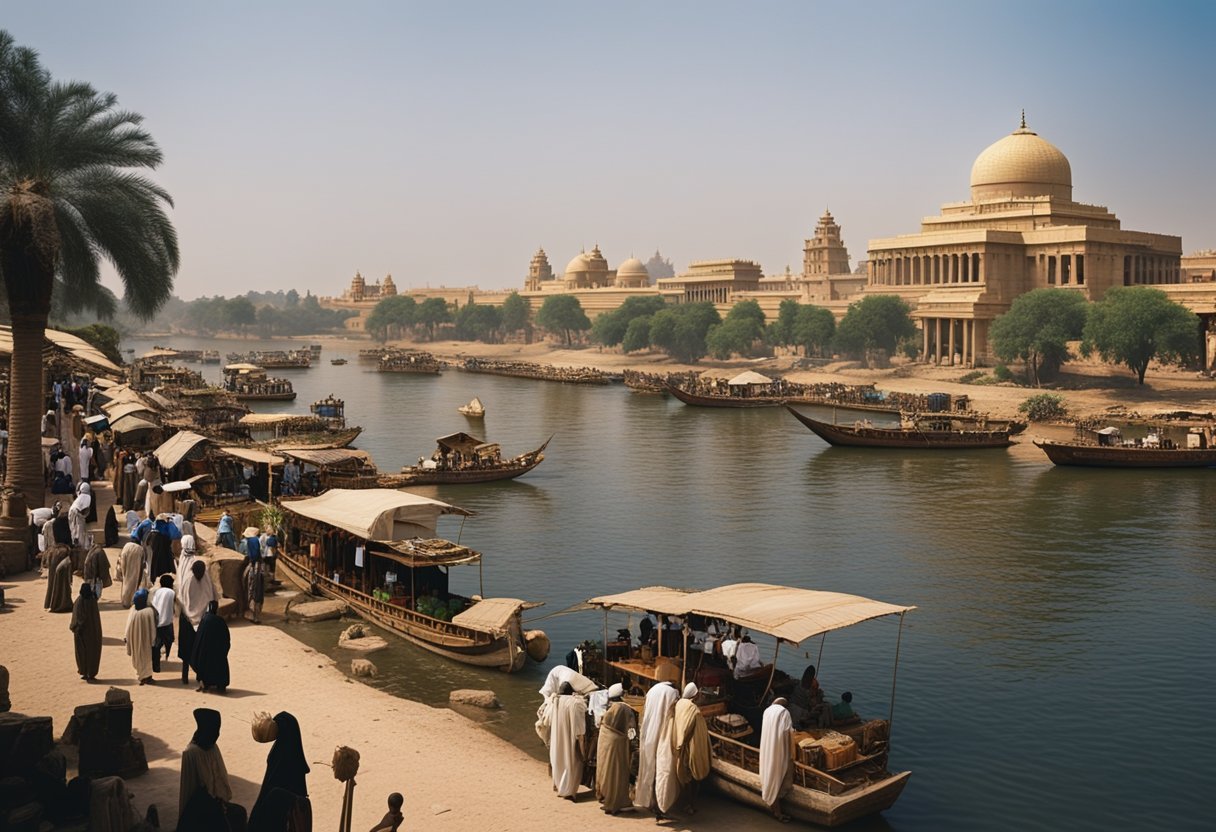Crocodilopolis, one of ancient Egypt’s lesser-known but fascinating cities, offers a captivating glimpse into a world where humans and crocodiles coexisted in reverence. Established during the Middle Kingdom around 2055 BCE – 1650 BCE, Crocodilopolis reached its zenith in the Greco-Roman period when it was renamed Arsinoe and served as the capital of the Arsinoite Nome. This ancient city sits on the western bank of the Nile, nestled between the great river and Lake Moeris.
What sets Crocodilopolis apart is its unique dedication to the crocodile god Sobek, symbolizing strength and fertility. The city’s temple housed a sacred crocodile known as Petsuchos, adorned with jewels and treated like royalty. Pilgrims from all over Egypt would visit to pay homage to this divine creature, showcasing the city’s crucial role in the religious landscape.
Despite its ancient origins, Crocodilopolis played a significant role in subsequent eras, particularly during the Greco-Roman period. Under the name Arsinoe, it gained prominence and continued to be a bustling center of administration and culture. The remnants of its grand temples and monuments still whisper tales of a civilization that thrived beside its sacred crocodiles, offering rich narratives for history enthusiasts and curious minds alike.
Origins and Founding

Crocodilopolis, an ancient city in Egypt, boasts a fascinating history tracing back to early human civilization. This city played a significant role in various dynasties, with ties to the worship of the crocodile god, Sobek, influencing its unique name and cultural heritage.
The Pre-Dynastic Period
Evidence suggests that the area around modern-day Faiyum, close to where Crocodilopolis would eventually arise, showed signs of human activity during the Pre-Dynastic period. Early inhabitants were likely attracted by the fertile land due to its proximity to the Nile.
These early settlers engaged in agriculture and fishing. Artifacts like pottery and tools from this era indicate evolving human settlement patterns. This period laid the groundwork for subsequent developments during the Pharaonic periods.
Early Dynastic Settlement
Crocodilopolis began to flourish as a significant settlement during the Early Dynastic period. Founded around the Middle Kingdom (c. 2055 BCE – 1650 BCE), the city became a focal point of development and population growth.
During the Middle Kingdom, the settlement saw extensive infrastructure building, including temples and administrative buildings. As a center of trade and governance, it attracted people from various regions, contributing to its cultural diversity.
Naming and the Sobek Connection
Initially known as Crocodilopolis, the city derived its name due to its strong association with Sobek, the crocodile god. According to legends, King Menes, credited with the city’s founding, named it after a crocodile saved him from wild dogs.
Sobek, worshipped as a powerful deity, had temples built in his honor within Crocodilopolis. The city’s name evolved through various periods, including the Greco-Roman era, when it was also called Arsinoe. Sobek’s presence in the city’s identity showcases the profound impact of religion on its cultural and social development.
Cultural and Religious Significance

Crocodilopolis, a city with a profound historical background, held a significant place in both the cultural and religious frameworks of ancient Egypt. It was renowned for its temple dedicated to Sobek, its unique place in mythology, and its role during the Ptolemaic Kingdom.
The Temple of Sobek
The temple of Sobek in Crocodilopolis was the center of religious activity. Sobek, the crocodile god, was worshipped here. He was believed to have control over the Nile and fertility.
The temple housed live crocodiles, treated as living embodiments of Sobek. Priests took exceptional care of these sacred reptiles. Visitors brought offerings to gain Sobek’s favor, hoping for good harvests and protection.
The temple and its activities permeated the daily life of Crocodilopolis, influencing the city’s rhythm and its people’s spiritual practices.
Crocodilopolis in Ancient Mythology
The city of Crocodilopolis was a critical spot in ancient Egyptian mythology. It was deeply linked to stories around Sobek, who was often depicted as a powerful and protective deity.
Sobek was featured in various myths, primarily associated with protection and fertility. These myths elevated Crocodilopolis’s status among Egyptian cities.
Participants in religious rituals reenacted these myths, bringing folklore to life. Such events drew people from surrounding areas, reinforcing Crocodilopolis’s significance in the broader Egyptian religious landscape.
The City’s Role in the Ptolemaic Kingdom
During the Ptolemaic Kingdom, Crocodilopolis retained its religious importance. Greek rulers of Egypt blended their culture with ancient Egyptian practices to gain favor among native Egyptians.
They respected and maintained temples dedicated to Egyptian gods, including Sobek. The interaction and integration of Greek and Egyptian customs in Crocodilopolis showcased the city’s adaptability and enduring religious importance.
These practices helped Crocodilopolis maintain its vitality and secure its place in history, not only as a religious center but also as a symbol of cultural synthesis.

